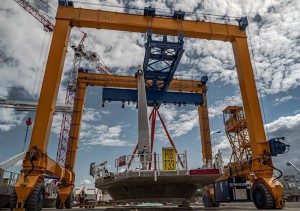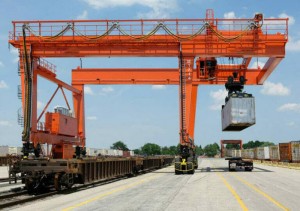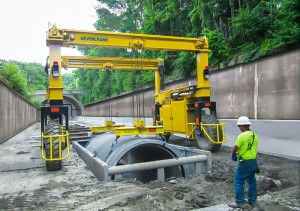
35t Rubber Tyred Gantry Crane Price
Product Details and Features
Easy to move: Due to the tire type, the rubbed tyred gantry crane has good mobile performance and can be quickly moved to the required working position, greatly improving work efficiency.
Strong adaptability: The rubbed tyred gantry crane can be adapted to a variety of different occasions, such as in the field, construction sites, etc., making the scope of use wider.
Low cost of use: Because of its simple structure and convenient use, the cost of use is also relatively low.
Efficient and energy-saving: The rubbed tyred gantry cranes usually use hydraulic or electric drive systems, which are highly efficient and energy-saving. The hydraulic system can provide powerful thrust and lifting capabilities, allowing the gantry crane to handle large and heavy objects.
Safe and reliable: The rubbed tyred gantry cranes usually follow strict safety standards during the design and manufacturing process, such as the international standard ISO. They are equipped with safety devices such as overload protection devices, limit switches and emergency stop buttons to ensure safe operation. In addition, the tire-type door crane also has a stable structure and excellent load-bearing capacity, and can reliably complete various lifting tasks.
Application
Ports and freight logistics: The rtg crane is widely used in port terminals and freight logistics sites for loading and unloading containers, stacking and handling cargo.
Construction site: In the construction site, the rtg crane can be used to carry and install large construction materials, such as steel structure, and concrete components.
Iron and steel metallurgy industry: The rtg crane is commonly used in iron and steel metallurgy industry for raw material handling, furnace loading and unloading, steel stacking and other operations.
Mines and quarries: The rubber tyred gantry crane is used for loading, unloading and handling of materials such as ore, coal, mineral sands and so on.







Product Process
Engineers and design teams draw structural diagrams, electrical diagrams, etc. of the door unit based on customer requirements and standard specifications. This involves determining the usage requirements, load-bearing capacity, working range, moving mechanism, lifting mechanism and safety requirements of the gantry crane.
A key step in the manufacturing process is the fabrication and processing of metal structures. This includes processes such as cutting, welding, drilling, milling and polishing.
















